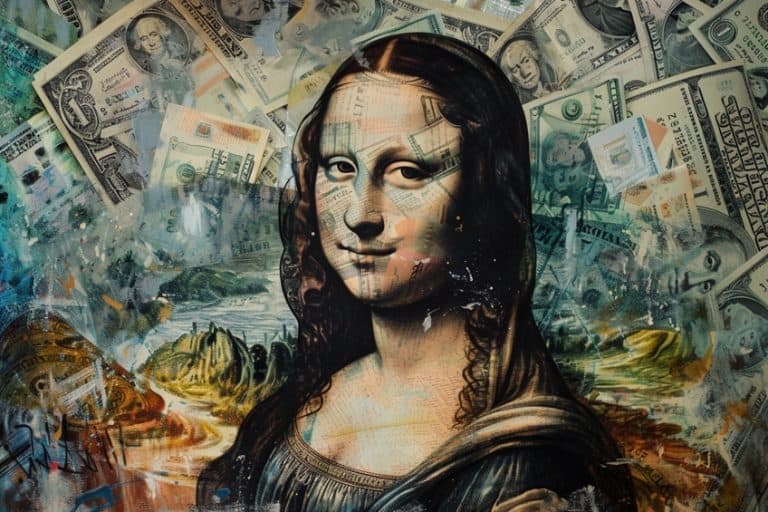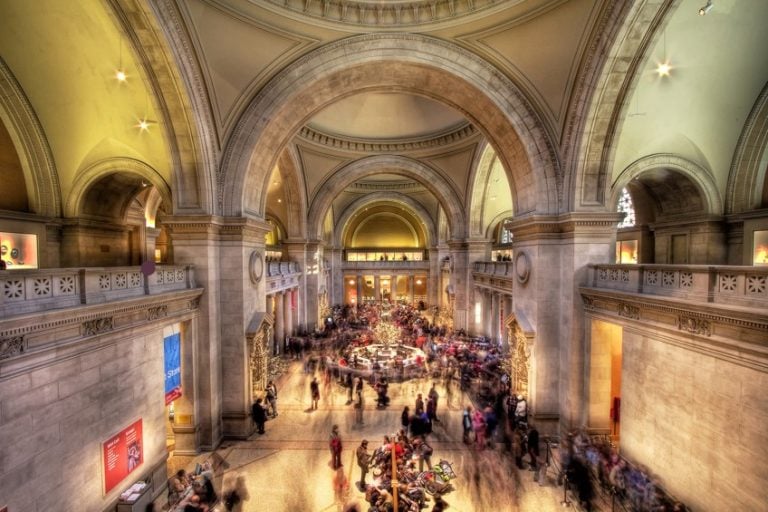Why Study Art? – The Power to Unleashing Creativity
Art is a ubiquitous presence in human life, encompassing a vast array of forms from paintings, sculptures, and architecture, to music, literature, and film. While it may be easy to view art as purely a form of entertainment or aesthetic pleasure, the truth is that studying art can offer much more than just enjoyment. Engaging with art can help us develop a deeper understanding of the world around us and our place in it, fostering critical thinking, creativity, empathy, and cultural awareness. In this article, we will explore questions such as, “why is it important to study art?”, “is art a subject in school students should pursue?”, “where to Study Art?”, and “what is an art study?”. Read below for an in-depth discussion on why studying art is a valuable decision.
Why Study Art?
Art has been used for societal and cultural purposes throughout human history. From the earliest cave paintings to the most contemporary art forms, it has been an essential means of expressing ideas, values, and beliefs, as well as reflecting the social and cultural context in which it was created. Let us explore some examples of how art has been used for societal and cultural purposes.
Societal and Cultural Purposes of Art: Religious and Spiritual Purposes
Art has been used to express religious and spiritual beliefs, values, and practices. Many of the world’s major religions have a rich history of art, including Christian iconography, Islamic calligraphy,
Hindu and Buddhist sculpture, and Native American pictographs.
Political and Propaganda Purposes
Art has been used to convey political and social messages, often serving as a tool of propaganda. Political art can be found in many forms, including posters, murals, and street art, and is often used to raise awareness about social justice issues, human rights, and political dissent.
Cultural Identity
Art has been used to express and celebrate cultural identity. Artistic expressions such as music, dance, and traditional crafts have long been important ways for communities to pass down cultural knowledge and preserve their heritage.

Education and Documentation
The role of art in education and documentation is important to discuss when we are looking at the question, “why study art?”. Art has been used to educate and document history and culture. Artifacts, artworks, and other cultural objects have been used to provide insight into the beliefs, customs, and practices of societies long gone.
Entertainment
Art has also been used for entertainment purposes, providing people with enjoyment and pleasure. From theater and cinema to music and literature, art has a vital role in providing leisure and entertainment to people of all ages and backgrounds.
Contemporary Society: Why Is It Important to Study Art?
When considering the question, “why study art?”, we need to look at the role of art in contemporary society. The function of art in modern civilization is multifaceted and constantly evolving. In the modern era, art has expanded beyond traditional forms such as painting and sculpture and has become increasingly diverse and experimental. In this section of the article, we will look at some of the ways in which art plays a role in contemporary society.
Social and Political Commentary
Art has the ability to reflect and comment on current social and political issues, such as climate change, human rights, and identity politics. Contemporary artists often use their work to raise awareness about important issues, spark debate, and encourage social change.
Cultural Identity and Diversity
Art can also play a part in fostering cultural multiplicity and familiarity. In a globalized world, contemporary artists often explore issues of identity and cultural exchange, drawing inspiration from a wide range of sources and traditions.
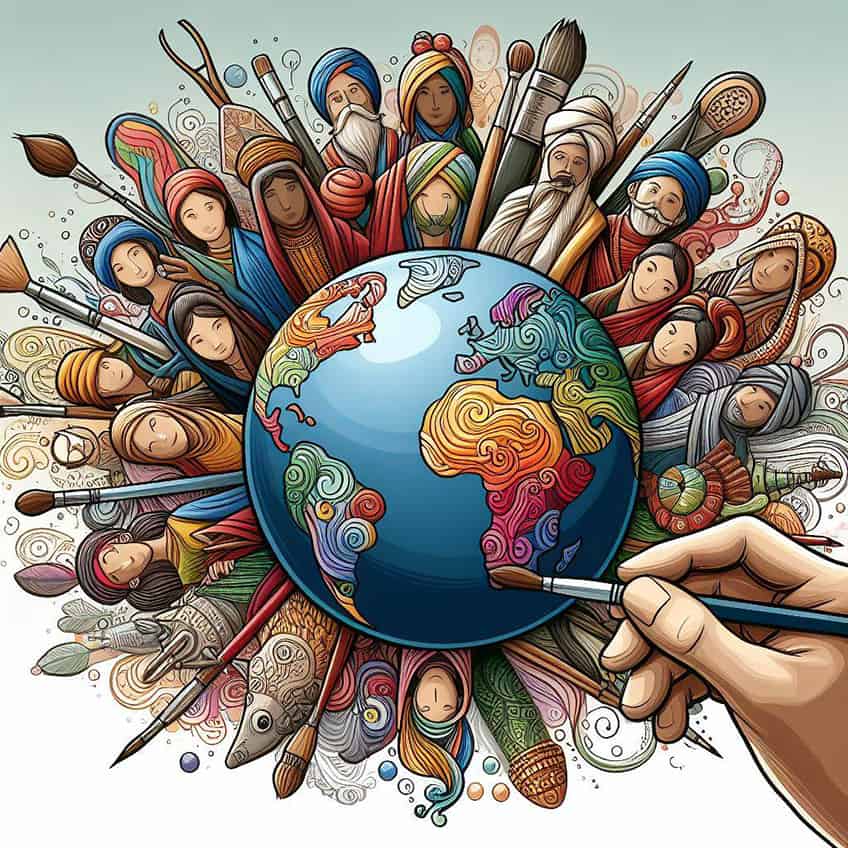
Technological Advancements
With advances in technology, artists have been able to explore new mediums and create innovative works that challenge traditional notions of art. Digital art, multimedia installations, and interactive installations are just a few examples of how technology is shaping contemporary art.
Entertainment and Aesthetics
Contemporary art also has a role in providing entertainment and aesthetic pleasure. From pop art to street art, contemporary artists continue to push the boundaries of what is considered art, creating works that are visually stunning and thought-provoking.
Economic and Commercial Value
Finally, art plays a significant role in the global economy, with contemporary art sales reaching record highs in recent years. Contemporary art is a major industry, with galleries, museums, and art fairs generating billions of dollars in revenue each year.
The Importance of Arts Education
Arts education has long been recognized as an essential component of a well-rounded education, providing students with the opportunity to develop creativity, critical thinking, and communication skills. Despite its importance, however, arts education is often undervalued and underfunded in many schools and communities. In this part of the piece, we will examine the significance of arts education and its effect on the academic, social, and emotional development of students.
Through this discussion, we hope to highlight the crucial role that arts education plays in shaping the future leaders, thinkers, and innovators of our society.
Critical Thinking
Art education is often seen as a luxury or an extracurricular activity, but the truth is that it plays a critical role in fostering critical thinking skills. Art provides students with an opportunity to develop their creativity and imagination, as well as their ability to analyze, interpret, and evaluate visual information.
Developing Observation and Analysis Skills
Art education encourages students to observe and analyze visual information. When creating art, students must pay attention to various details. This process of observation and analysis helps to develop critical thinking skills, enabling students to identify patterns and relationships, make connections, and draw conclusions.
Enhancing Communication Skills
Art education also helps to develop communication skills, as students learn how to express themselves visually. Art provides an opportunity for students to communicate their thoughts and emotions in a way that is both powerful and personal.

Building Cultural Awareness
Art education can also foster cultural awareness, as students learn about different cultures and traditions through the study of art. By analyzing art from various parts of the globe and throughout history, students can gain deeper wisdom of diverse viewpoints and ways of living.
This skill is important when relating to people from different backgrounds and thinking about issues that involve individuals from diverse cultures.
Art and Problem-Solving Abilities
Studying art can contribute significantly to problem-solving abilities in various ways. Art is not only a way to express yourself but can also be used to solve problems creatively. Here are some ways in which studying art can improve problem-solving abilities.
Teaches Perseverance
Art is a process that requires patience and perseverance. Studying art teaches individuals that problem-solving is not consistently comfortable, but it is worth the endeavor. Artists often face setbacks and must overcome challenges to create their work.
This process teaches individuals that perseverance is key to solving problems.
Improves Observation Skills
Dr. Clarissa Pinkola Estes says in her book The Creative Fire that art is about deep observation. To make art that is engaging, clever, relevant, and inspiring, artists need to train their eyes to see what few other people notice. In the process of creating art, students must pay attention to details such as color, form, and texture. This kind of observation can be applied to other areas of life, such as problem-solving in science, engineering, or medicine.

Teaches Risk-Taking
Art encourages individuals to take chances and explore fresh concepts. Studying art teaches individuals that risk-taking is an essential component of problem-solving. Art students are often encouraged to experiment with new techniques, materials, and ideas, which teaches them to take risks and embrace the unknown.
Encourages Collaboration
Art education often involves collaborative assignments that mandate learners to work concurrently to solve issues. In this process, students learn how to work as a unit and use the strengths of each person to reach a joint destination. This kind of collaborative problem-solving can be applied to other areas of life, such as in the workplace or personal life.
Art and Creative Thinking
Art education can teach creative thinking in many ways, as it is designed to encourage students to explore and experiment with new ideas, materials, and techniques. Here are some ways in which art education can build creative thinking.
Encourages Experimentation
Art education centers around the application of various mediums in new ways. Learners often do not know the result of their visions until they execute them. This basis of experimentation with different materials, techniques, and ideas teaches them that exploration leads to new possibilities, which helps them develop their creativity and imagination.
Provides Opportunities for Self-Expression
Art education offers prospects for scholars to convey themselves creatively. By encouraging self-expression, students learn to trust their instincts and develop their unique voice, which helps them to become more creative thinkers.

Develops Imagination
Art education stimulates the imagination and helps students develop their ability to visualize and think creatively. By providing students with an opportunity to create their own world and tell their own stories, art education encourages imagination and helps students develop their creative thinking skills.
Art Education and Emotional Intelligence
Art has long been recognized as a valuable tool for improving mental health and well-being. In recent years, the benefits of art education and art therapy have become more widely recognized, with increasing evidence demonstrating the positive impact of art on emotional intelligence and mental health.
The Development of Emotional Intelligence Through Art
One of the ways that art education can develop emotional intelligence is by encouraging students to explore and express their emotions through art. This process can help students develop a greater insight into their own feelings, as well as compassion and understanding of the feelings of others.
Through art, learners can discover how to express their emotions in a wholesome and effective way, which can lead to enhanced connections and more significant self-awareness.
The Benefits of Art Therapy and Art Education
Art therapy is another powerful tool for improving emotional intelligence and mental health. Art therapy concerns the use of art-making as a form of therapy, authorizing people to represent their feelings and work through personal challenges. This process can be particularly beneficial for individuals who have hardship articulating themselves verbally, such as those with trauma or mental illness. By engaging in the creative process, individuals can develop greater self-awareness, emotional regulation, and coping skills. Here is a concise bullet-point list derived from The Art Therapy Sourcebook by Cathy Malchiodi on how art therapy can support personal growth:
- Art assists in emotional release. Art-making has therapeutic benefits that help us engage with our emotions and express what words cannot. Many individuals turn to art when they reach the boundaries of vocabulary and reasoning in processing difficult feelings.
- Art teaches us about sensory experience. Art employs our sensorial knowledge of the world and helps us connect with sounds, smells, textures, and shapes. This makes it a valuable tool in navigating and understanding the world, as the understanding and use of materials are vital to human functioning.
- Art enhances our lives. It has been scientifically proven that engaging with art can transform inner conflict, reduce stress, and promote compassionate ways of engaging with the world. It challenges perfectionism and helps us transcend our rigid living patterns. Creating and viewing art can act as an agent for accessing the evasive, inventive, and strange nature of reality. Art is an important way of discovering new meanings in life, connecting with our inner child, and assessing and changing our values.
- Art is conducive to individuation. Art-making is a fun practice that promotes curiosity, playfulness, and identity formulation. It permits us to relate to our intuition and energizes us. Artistic expression communicates our unique perspective on life and can help us stand out in a world that often promotes a group mentality.
- Art creates relationships. Art allows for connection and communication, as it can help release stress and mediate emotions. It also supplies a platform for people to talk about difficult topics and share their perspectives, which can lead to growth and healing.
The Impact of Art on Mental Health
In addition to emotional intelligence, art education and art therapy have a range of other benefits for mental health. Research has proven that employing art can reduce symptoms of anxiety and depression, lower tension levels, and improve overall well-being.
Creating art can also provide a sense of achievement and fulfillment, which can boost self-esteem and confidence.

Moreover, art has been shown to have a therapeutic effect on individuals with chronic illnesses, such as cancer or chronic pain. Creating art can provide a sense of control and purpose, as well as a distraction from the physical and emotional challenges of illness.
Art Education and Communication
Art education is often overlooked as a means of improving communication skills, yet it has been proven to be a valuable tool for fostering better communication and understanding among individuals. In this section of the article, we will explore how art education can improve communication skills, the impact of visual art on communication, and how art education can foster empathy and understanding.
Express Visually
Learning to express visually can help people who may struggle with oral communication to communicate their thoughts and ideas more effectively. By creating art, students can develop their ability to communicate through visual cues and symbolism, which can be valuable skills in fields such as graphic design and advertising.
Moreover, visual art has a unique impact on communication.

Visual art can be used to express sentiments, views, and messages in a way that language alone cannot. By studying visual art, students can develop an understanding of how to use color, form, and composition to communicate their message effectively. This craft can be used in a broad spectrum of fields, including marketing, education, and media.
Art Foster Empathy and Understanding
In addition to improving communication skills, art education can foster compassion and insight. Through the study of art, students are exposed to a range of perspectives and ideas that may be different from their own. This exposure can lead to greater empathy and understanding for others, as well as a broader perspective on the world around them. Art education can also provide a safe space for students to express their emotions and experiences, which can help foster a sense of empathy and understanding for others.
By creating art that reflects their own experiences, students can develop a greater understanding of themselves and their place in the world, as well as empathy for others who may have had similar experiences.
Art Education and Cultural Awareness
Art education has the potential to be a powerful tool for promoting cultural awareness and understanding. In this part of the article, we will explore how art education can teach cultural diversity, the importance of understanding different art forms, and how art can transcend language barriers.
Art Teaches Cultural Diversity
One of the ways that art education can teach cultural diversity is by exposing students to a variety of art forms from different cultures. By studying art from different regions of the world, students can gain a greater understanding of different cultural traditions and practices.
This exposure can help students develop empathy and understanding for people from different backgrounds, as well as a broader perspective on the world around them.
The Importance of Understanding Different Art Forms
Moreover, understanding different art forms is essential to understanding different cultures. Art is a reflection of cultural beliefs, values, and traditions, and studying different art forms can provide valuable insights into the cultural practices of a particular community. By studying different art forms, students can develop a deeper understanding of the history and context behind the art, as well as the cultural significance of particular art forms.
Art Transcends Language Barriers
Art also has the ability to surpass language borders. Art can communicate ideas and emotions in a way that words alone cannot. Through art, individuals can express their cultural identity, share their experiences, and communicate their ideas with others. This ability to communicate through art can be particularly powerful in situations where language barriers may exist.
In addition, art education can help students develop the skills necessary to create art that transcends language barriers.

By studying the impact of color, form, and composition on the viewer, students can learn to communicate their message effectively through visual cues and symbolism. This skill can be particularly valuable in fields such as advertising, graphic design, and media, where effective communication is essential.
Art Education and Career Development
Art education is often overlooked when considering the path to a successful career. However, the truth is that a strong foundation in the arts can have a powerful effect on career expansion. In this article, we will explore how art education can enhance career prospects, the impact of art on innovation and entrepreneurship, and the growing importance of creativity in the workplace.
Art Education Can Enhance Career Prospects
One of the keyways that art education can enhance career prospects is by developing skills that are highly sought after in the job market. Art education teaches skills which are highly transferable and applicable in a broad scope of industries. In addition, art education also develops skills such as communication, collaboration, and adaptability, which are essential in today’s fast-paced work environment.
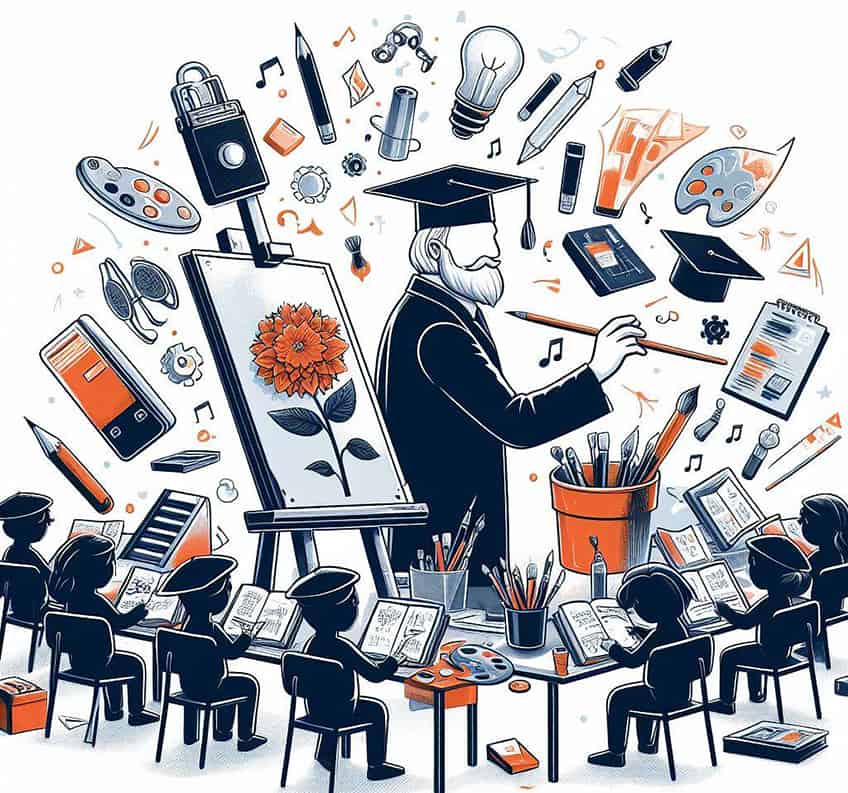
The Impact of Art on Innovation and Entrepreneurship
Art education also plays a critical role in fostering innovation and entrepreneurship. The arts have long been a source of inspiration for inventors, designers, and entrepreneurs, and art education can provide the necessary skills to turn creative ideas into tangible products and services.
By encouraging originality and imagination, art education enables individuals to think outside the box, take risks, and innovate.
The Growing Importance of Creativity in the Workplace
Furthermore, creativity is becoming more essential in the professional space. As technology continues to advance and automation becomes more prevalent, creativity is becoming a key differentiator in the job market. Employers are searching for people who can bring new and innovative ideas to the table and think creatively about problem-solving. Art education can help individuals develop the skills necessary to meet these demands and stand out in a competitive job market.
Art Education and Personal Growth
Art education is not just about learning how to draw or paint; it can also be a mighty instrument for individual development and expansion. In this article, we will explore how art education can contribute to personal growth, the impact of art on self-expression, and the role of art in self-discovery.
Art Education and Personal Growth and Development
One of the keyways that art education can contribute to personal growth is by providing a space for self-expression. Through creating art, individuals can express their emotions, thoughts, and ideas in a way that may not be achievable through oral communication alone.
Art can provide a safe and supportive environment for individuals to explore and express their inner selves, which can lead to a greater sense of self-awareness and self-acceptance.
The Impact of Art on Self-Expression
In addition to self-expression, art can also play a significant role in self-discovery. Through creating art, people can explore their identity, values, and beliefs, which can lead to a deeper knowledge of themselves and the world around them. Art can also provide a means of reflection and introspection, allowing individuals to explore their inner selves and gain insight into their thoughts and feelings.
The Role of Art in Self-Discovery
Moreover, art education can also help individuals develop key personal growth skills such as resilience, perseverance, and self-discipline. Creating art demands practice, patience, and a willingness to take risks and make mistakes. Through the process of creating art, individuals can develop these essential skills, which can have a favorable influence on their individual and professional lives.

Art Education and Technology
In today’s increasingly digital world, the intersection of art education and technology has become more important than ever before. Here, we will explore how art education can foster technological literacy, the role of art in advancing technology, and the future of art and technology.
Technological Literacy
Art education can foster technological literacy by providing opportunities for students to engage with technology in a creative and meaningful way. Through the integration of technology into art education, students can develop skills in digital media, graphic design, animation, and other areas that are in high demand in today’s job market.
By learning how to use technology to create art, students can gain valuable experience and knowledge that can help them succeed in a variety of fields.
Advancing Technology
Furthermore, the role of art in advancing technology should not be underestimated. The creative and innovative ideas of artists and designers have driven many technological advances. For example, 3D printing technology was initially developed as a tool for creating prototypes in the field of industrial design. Today, it has expanded to other fields such as medicine and engineering.
Artistic experimentation and exploration can lead to new applications and uses for technology, making it more accessible and useful to society.

The Future of Art and Technology
Looking towards the future, the relationship between art and technology is likely to continue to evolve and grow. Virtual reality and augmented reality technologies offer fresh opportunities for artists to create immersive and engaging experiences for audiences. Art and technology collaborations can lead to breakthroughs in domains such as pharmaceuticals, transportation, and transmission.
As technology persists to progress, the potential for art and technology to intersect and influence each other is limitless.
Art Education and the Economy
Art education and the arts, in general, have a noteworthy influence on the economy, both in the local field and internationally. Let us explore the economic impact of the arts, the importance of art education for economic growth, and the role of art in community development.
The Economic Impact of the Arts
The financial effect of the arts cannot be overstated. The creative industries, including the visual arts, performing arts, design, and more, contribute billions of dollars to the economy each year. In the United States, the arts and cultural sector contributed $877.8 billion to the economy in 2017, which is roughly 4.5% of the country’s GDP.
This includes not only the direct economic impact of the arts, such as jobs and revenues, but also the indirect impact, such as increased tourism and cultural attraction.
Art and Economic Growth
Art education plays a vital role in fostering economic growth by preparing individuals for careers in the creative industries. By providing training in the visual arts, performing arts, and other creative fields, art education equips individuals with the skills and competencies necessary to succeed in these industries.
In addition, art education can provide individuals with transferable skills, such as critical thinking, problem-solving, and communication, which are valuable in many other fields.
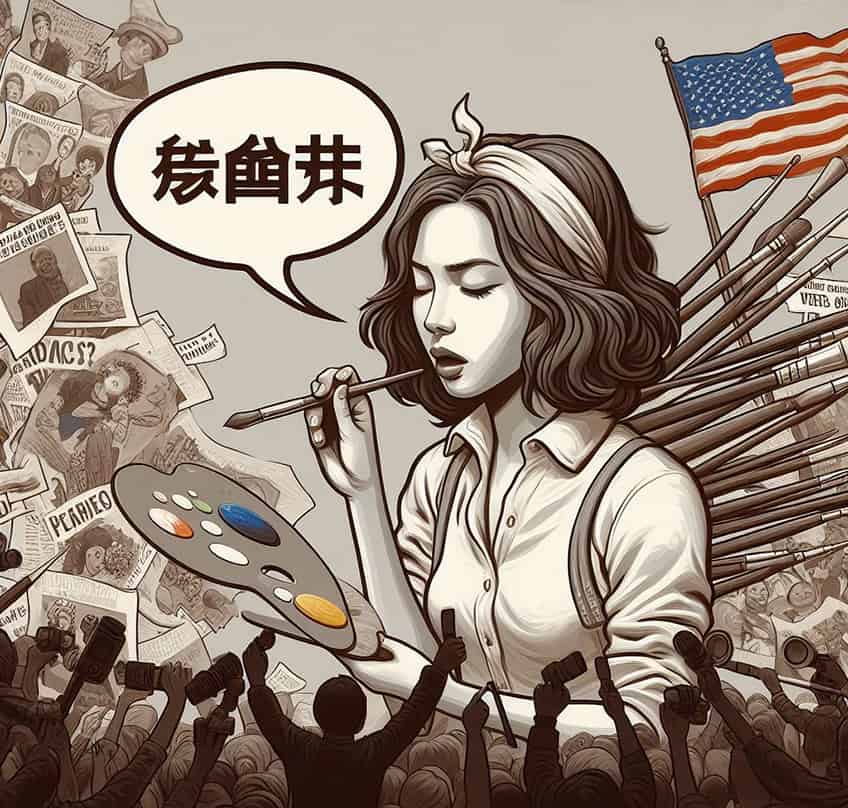
The Role of Art in Community Development
Moreover, art can play a crucial role in societal development. The presence of arts and cultural organizations can help to revitalize communities, attract tourists, and stimulate economic growth. Public art, such as murals and sculptures, can help to beautify neighborhoods and create a sense of place.
Community-based arts programs, such as after-school programs and summer camps, can provide youth with opportunities to explore their creativity and develop skills that will serve them well in the future.
Art Education and Social Justice
Art education can significantly promote social justice by fostering critical thinking, promoting empathy, and providing a platform for diverse voices and perspectives. In this section of the article, we will explore how art education can promote social justice, the impact of art on social issues, and the role of art in activism and advocacy.
Art Education and the Promotion of Social Justice
Art education can promote social justice by providing students with a space to explore issues of equity and inclusion. Through the study of art, students can learn about the history and cultural context of different art forms and artists, as well as the social and political issues that have influenced them.
Additionally, art education can provide students with the tools and skills necessary to create art that challenges social norms and promotes social justice.
The Impact of Art on Social Issues
Art can have a powerful impact on social issues by raising awareness, promoting dialogue, and inspiring action. Art can serve as a medium for expressing ideas and emotions, as well as challenging societal norms and beliefs. Art can also serve as a means of storytelling, giving voice to marginalized communities and highlighting their experiences.

Art, Activism, and Advocacy
The function of art in activism and advocacy cannot be overstated. Artists and art organizations have long used their platforms to advocate for social change and advance social justice. From the civil rights movement to the Black Lives Matter movement, art has been used to bring attention to issues of racial injustice, inequality, and discrimination.
Through art, individuals and communities can create a space for themselves and their perspectives, challenging the status quo and inspiring others to join their cause.
Where to Study Art?
There are many great schools in the United States that offer high-quality art education programs. Here we will list just a few of the famous art schools in the United States. Each school has its own unique strengths and offerings, so it’s vital to do your investigation and select a course that aligns with your interests and objectives:
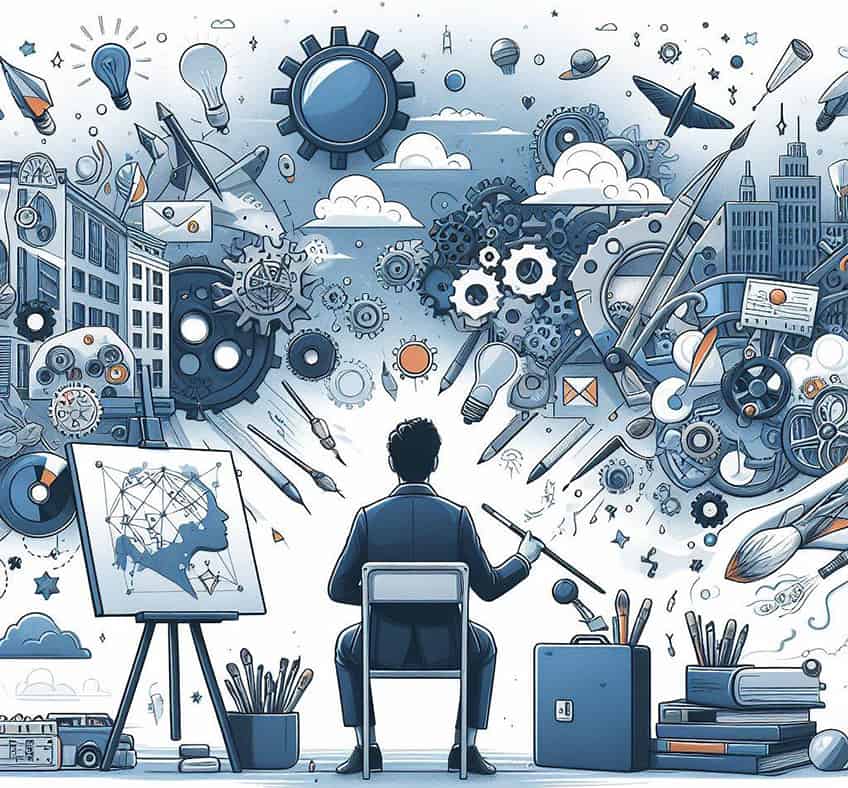
- Rhode Island School of Design (RISD): Located in Providence, Rhode Island, RISD is consistently ranked as one of the top art schools in the world. The institute presents an expansive range of undergraduate and graduate programs in fine arts, design, and architecture.
- School of the Art Institute of Chicago (SAIC): SAIC is a premier art school located in the heart of Chicago, Illinois. The academy offers programs in an assortment of fields, including painting, sculpture, photography, and performance art.
- California Institute of the Arts (CalArts): Located in Valencia, California, CalArts is a private art school that is known for its innovative programs in film, animation, and visual arts. The school also offers programs in music, dance, and theater.
- Pratt Institute: Located in Brooklyn, New York, Pratt is a highly regarded art and design school that offers undergraduate and graduate programs in a variety of disciplines, including architecture, fashion design, and graphic design.
- Cooper Union for the Advancement of Science and Art: Located in New York City, Cooper Union is a prestigious school that offers undergraduate programs in art, architecture, and engineering. The school is known for its rigorous curriculum and its commitment to providing students with an all-round education.
In conclusion, the benefits of studying art are numerous and far-reaching. From promoting critical thinking, creativity, and empathy, to enhancing communication skills and cultural awareness, art education can contribute to personal growth, career development, and social justice. Moreover, the impact of art on mental health, technology, and the economy cannot be overstated. Studying art is not just about learning to create beautiful works of art, but it is also about developing skills and perspectives that are essential for success in various fields and for personal well-being. Therefore, it is imperative that art education continues to be supported and valued by individuals, communities, and policymakers. By investing in art education, we invest in the future of our society and the growth of individuals as thinkers, innovators, and agents of change.
Frequently Asked Questions
What Is an Art Study?
Art education is a form of instruction that focuses on the study and practice of visual and performing arts. It involves developing skills and knowledge related to various art forms, such as drawing, painting, sculpture, music, dance, and theater. Art education can take place in various settings, such as schools, community centers, museums, and private studios, and can be taught by professional artists or trained educators.
How Does Art Education Benefit Students?
Art education offers numerous benefits to students. It promotes creativity, critical thinking, and problem-solving skills, as well as self-expression and confidence. Art education also fosters cultural awareness, empathy, and understanding, and can help students develop better communication and collaboration skills. Moreover, research suggests that involvement in the arts can have positive impacts on academic achievement and mental health. Through art education, students can develop a deeper appreciation for the arts and their own unique abilities, while gaining valuable skills and experiences that can benefit them throughout their lives.
Is Art a Subject in School Anyone Can Take?
Yes, anyone can learn art! Art is a skill that can be developed through practice and guidance, much like any other skill. While some people may have a natural talent or inclination for the arts, this does not mean that others cannot learn to create beautiful and meaningful works of art. Art education provides individuals with the opportunity to explore their own artistic interests and abilities, and to develop their skills and knowledge in various art forms. With the right resources and support, anyone can learn and benefit from the study of art.
What Are the Different Forms of Art Education?
Art education can take various forms depending on the setting, the instructor, and the goals of the program. In schools, art education may be taught as a standalone subject, such as visual arts or music, or integrated into other subjects, such as language arts or social studies. Art education can also take place in community centers, museums, and private studios, where individuals can take classes or workshops in specific art forms or techniques. Additionally, online resources and platforms offer opportunities for self-guided learning and virtual instruction. Art education can be taught by professional artists, educators, or volunteers, and can range from introductory to advanced levels of instruction.
How Does Art Education Impact Society?
Art education has a significant impact on society. It promotes cultural awareness and diversity, and can serve as a tool for social justice and advocacy. Art education also stimulates innovation, creativity, and critical thinking, which are crucial for economic and technological development. Moreover, involvement in the arts has been shown to have positive effects on mental health and well-being and can improve academic performance and career prospects. Through art education, individuals are empowered to express themselves, explore new ideas, and develop new skills and perspectives, contributing to a more vibrant and engaged society.
What Are Some Common Misconceptions About Art Education?
There are some common misconceptions about art education that are worth addressing. One of them is the belief that art education is only for individuals who are naturally talented or interested in the arts. Another misconception is that art education is a luxury or an extracurricular activity that is not essential for academic or career success. Additionally, some people may assume that art education is only about creating aesthetically pleasing works of art, and that it has no practical value. These misconceptions overlook the many benefits of art education, such as promoting creativity, critical thinking, and cultural awareness, as well as improving mental health and well-being. It’s important to recognize that art education is a valuable and accessible opportunity for personal and societal growth and development.
Nicolene Burger is a South African multi-media artist, working primarily in oil paint and performance art. She received her BA (Visual Arts) from Stellenbosch University in 2017. In 2018, Burger showed in Masan, South Korea as part of the Rhizome Artist Residency. She was selected to take part in the 2019 ICA Live Art Workshop, receiving training from art experts all around the world. In 2019 Burger opened her first solo exhibition of paintings titled, Painted Mantras, at GUS Gallery and facilitated a group collaboration project titled, Take Flight, selected to be part of Infecting the City Live Art Festival. At the moment, Nicolene is completing a practice-based master’s degree in Theatre and Performance at the University of Cape Town.
In 2020, Nicolene created a series of ZOOM performances with Lumkile Mzayiya called, Evoked?. These performances led her to create exclusive performances from her home in 2021 to accommodate the mid-pandemic audience. She also started focusing more on the sustainability of creative practices in the last 3 years and now offers creative coaching sessions to artists of all kinds. By sharing what she has learned from a 10-year practice, Burger hopes to relay more directly the sense of vulnerability with which she makes art and the core belief to her practice: Art is an immensely important and powerful bridge of communication that can offer understanding, healing and connection.
Nicolene writes our blog posts on art history with an emphasis on renowned artists and contemporary art. She also writes in the field of art industry. Her extensive artistic background and her studies in Fine and Studio Arts contribute to her expertise in the field.
Learn more about Nicolene Burger and the Art in Context Team.
Cite this Article
Nicolene, Burger, “Why Study Art? – The Power to Unleashing Creativity.” Art in Context. January 18, 2024. URL: https://artincontext.org/why-study-art/
Burger, N. (2024, 18 January). Why Study Art? – The Power to Unleashing Creativity. Art in Context. https://artincontext.org/why-study-art/
Burger, Nicolene. “Why Study Art? – The Power to Unleashing Creativity.” Art in Context, January 18, 2024. https://artincontext.org/why-study-art/.





